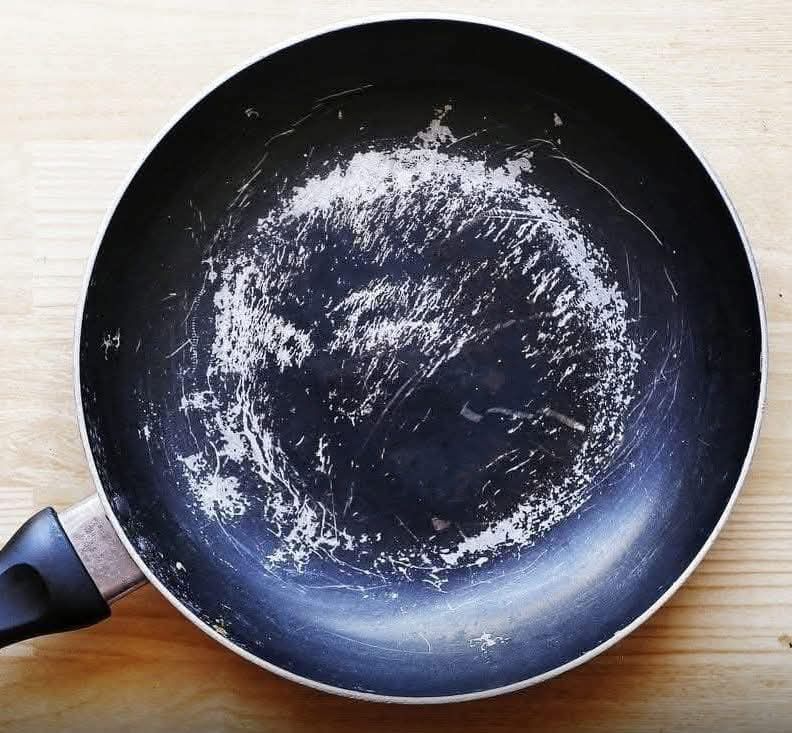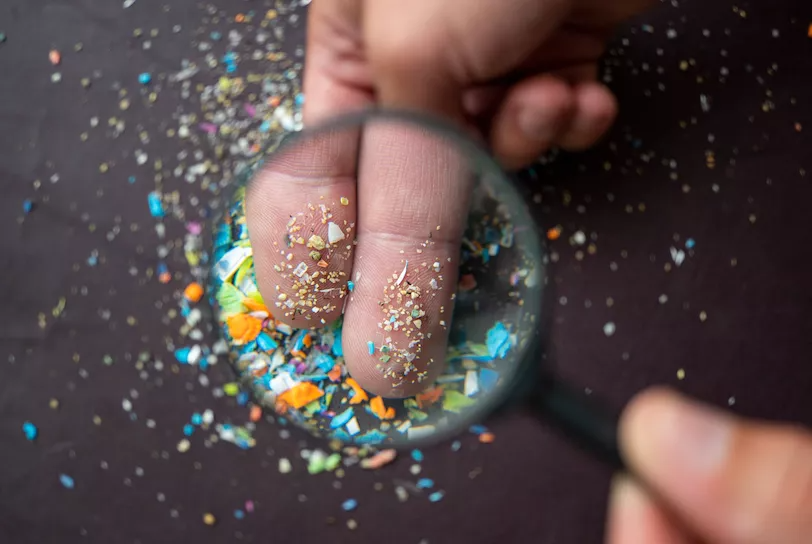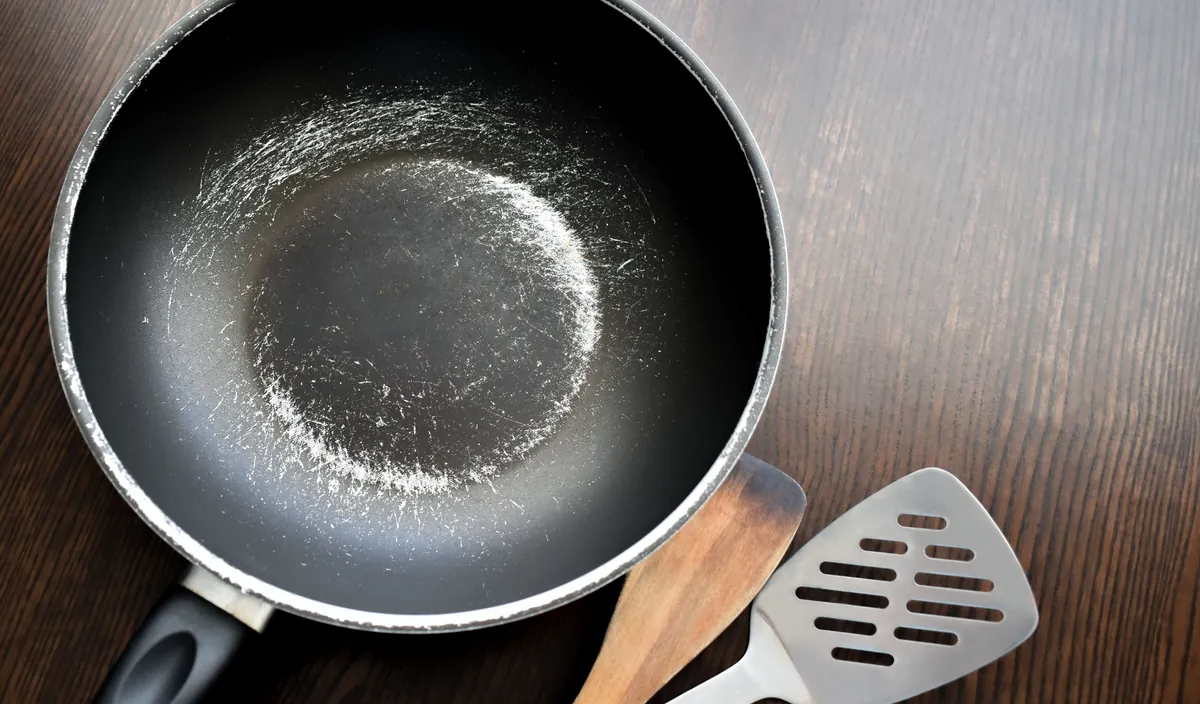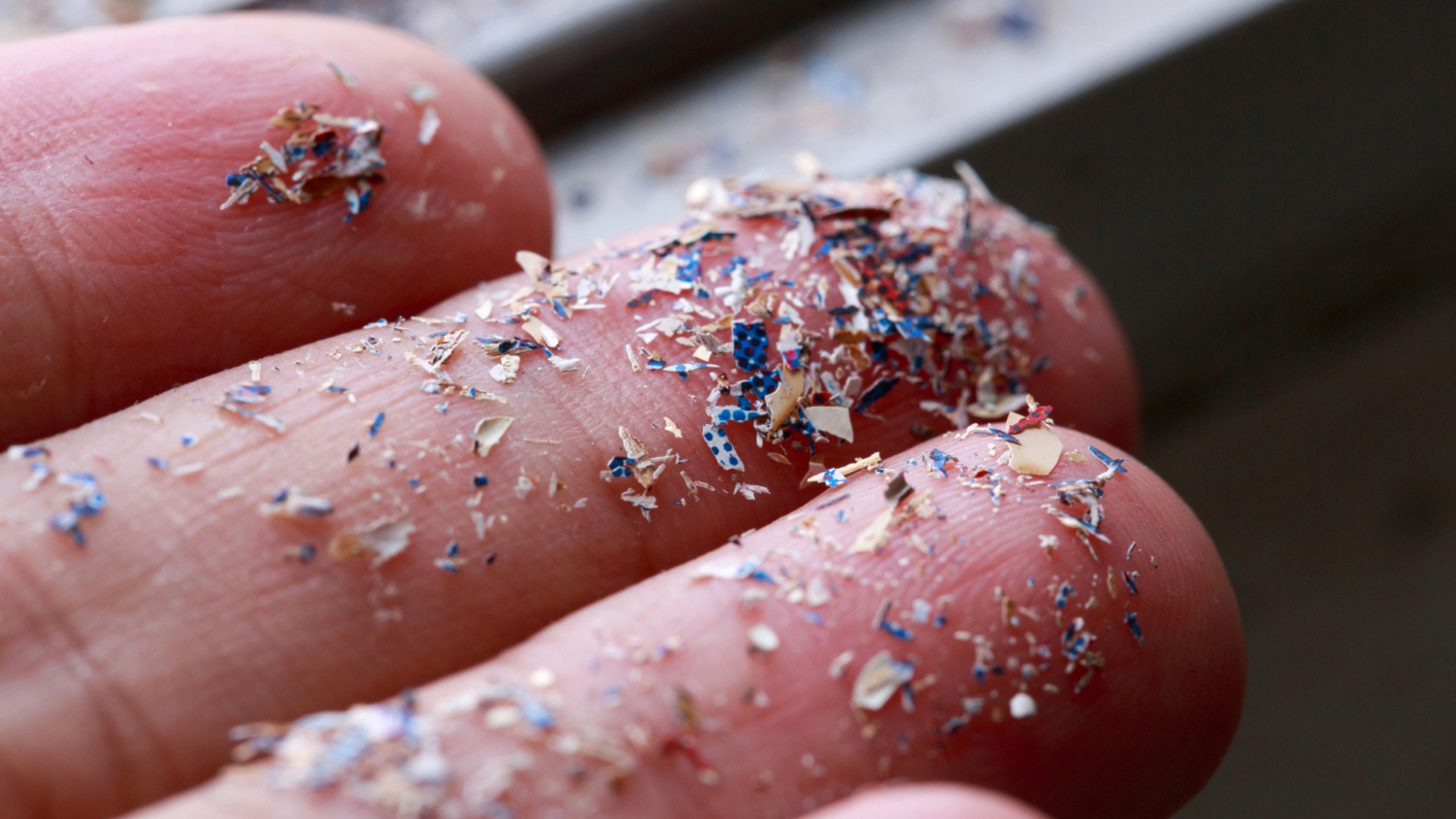A 2022 Australian study suggests that the non-stick pans many people rely on for convenient cooking may actually be releasing thousands to millions of microplastic and nanoplastic particles into food, especially if the cookware is scratched or damaged.

Researchers from the University of Newcastle in Australia found that a minor scratch on a non-stick pan can release around 9,100 microplastic particles. Even more concerning, a damaged coating may result in up to 2.3 million microplastic and nanoplastic particles contaminating food and the surrounding cooking environment.
Non-stick cookware, commonly coated with Teflon, gradually loses its coating over time through use and washing. This raises concerns about the potential ingestion of plastic particles. However, determining the exact amount of plastic released during cooking has proven to be challenging.
The Science Behind the Findings

The study focused on microplastics (particles smaller than 5 millimeters) and nanoplastics (significantly smaller particles at a molecular scale). Researchers used Raman imaging technology, which utilizes photon scattering, to analyze Teflon coatings at a molecular level. They also developed specialized algorithms to estimate how much coating material may detach and enter food.
To simulate real cooking conditions, the research team cut pieces of Teflon-coated cookware and used turners made of different materials—including stainless steel, wool, plastic, and wood—to scrape against the cookware for a fixed period. Their findings showed that if a cooking utensil ruptures the Teflon surface, it could release millions of microscopic particles within just 30 seconds of cooking.
Health and Environmental Concerns

Teflon, or polytetrafluoroethylene (PTFE), belongs to a class of chemicals known as per- and polyfluoroalkyl substances (PFAS), often referred to as “forever chemicals.” These substances persist in the environment and have been linked to various health risks.
“Given the significant concerns surrounding PFAS, the presence of Teflon microparticles in our food could pose a health risk,” warns Cheng Fang, a materials scientist at the University of Newcastle.
Since the study’s publication, awareness of microplastic contamination has increased, prompting further investigations into its impact on human health. More recent studies continue to explore how these particles interact with the body and the long-term consequences of ingestion.
While further research is needed to determine how widespread and hazardous this contamination might be, the researchers advocate for more in-depth studies on the potential health risks associated with cooking with non-stick cookware.
What Can Be Done?

The study suggests that older non-stick cookware may need to be retired after a certain period to prevent excessive degradation. Additionally, improving the durability of Teflon coatings could help minimize the wear and tear that leads to the release of plastic particles.
The researchers acknowledge the challenges in detecting and assessing microplastics and nanoplastics at such tiny scales. However, they stress the importance of continued investigations into the risks posed by Teflon coatings.
“Further research is necessary to assess the risks associated with Teflon microplastics and nanoplastics, particularly given their connection to PFAS,” says Youhong Tang, a mechanical and materials engineer at Flinders University.
The study was published in Science of The Total Environment in 2022, and since then, new research has continued to highlight the potential risks associated with microplastic exposure in everyday life.
Source: fox10phoenix.com; dailymail.co.uk; sciencealert.com






